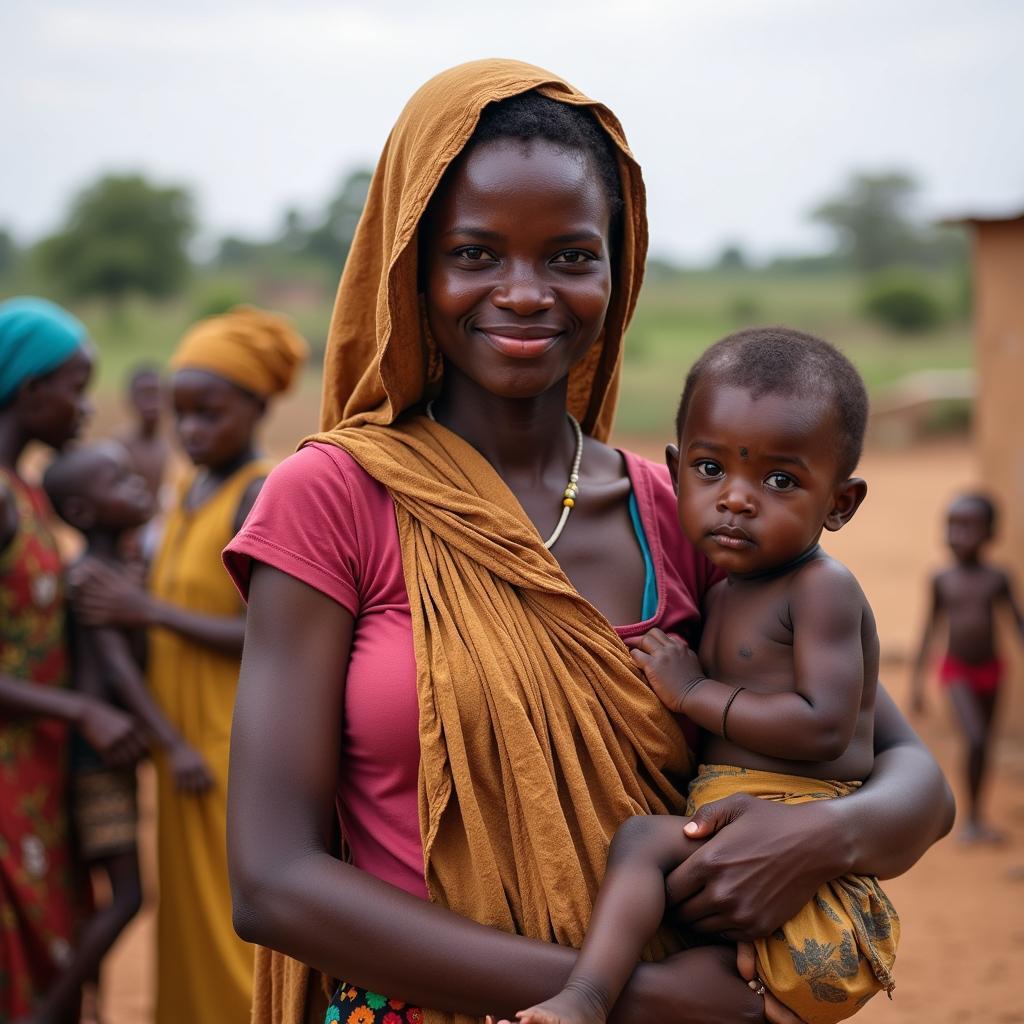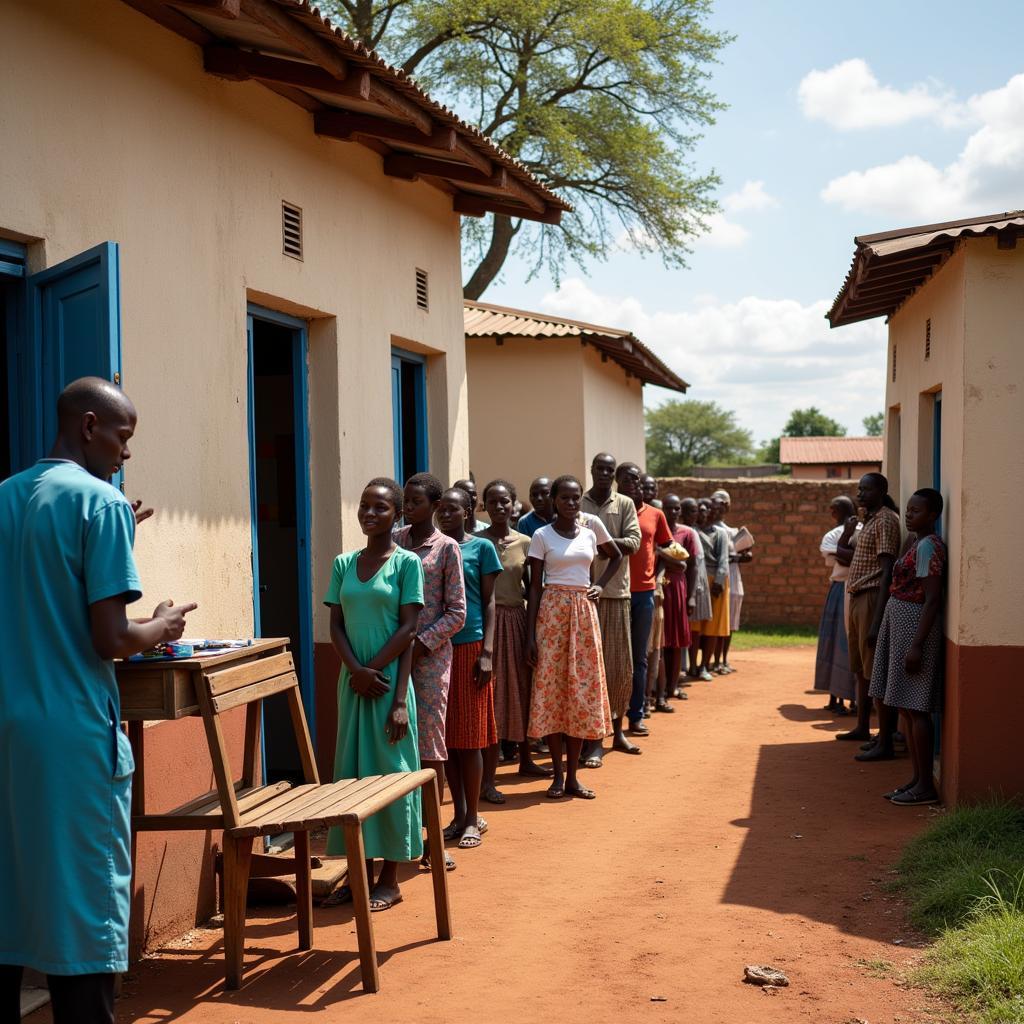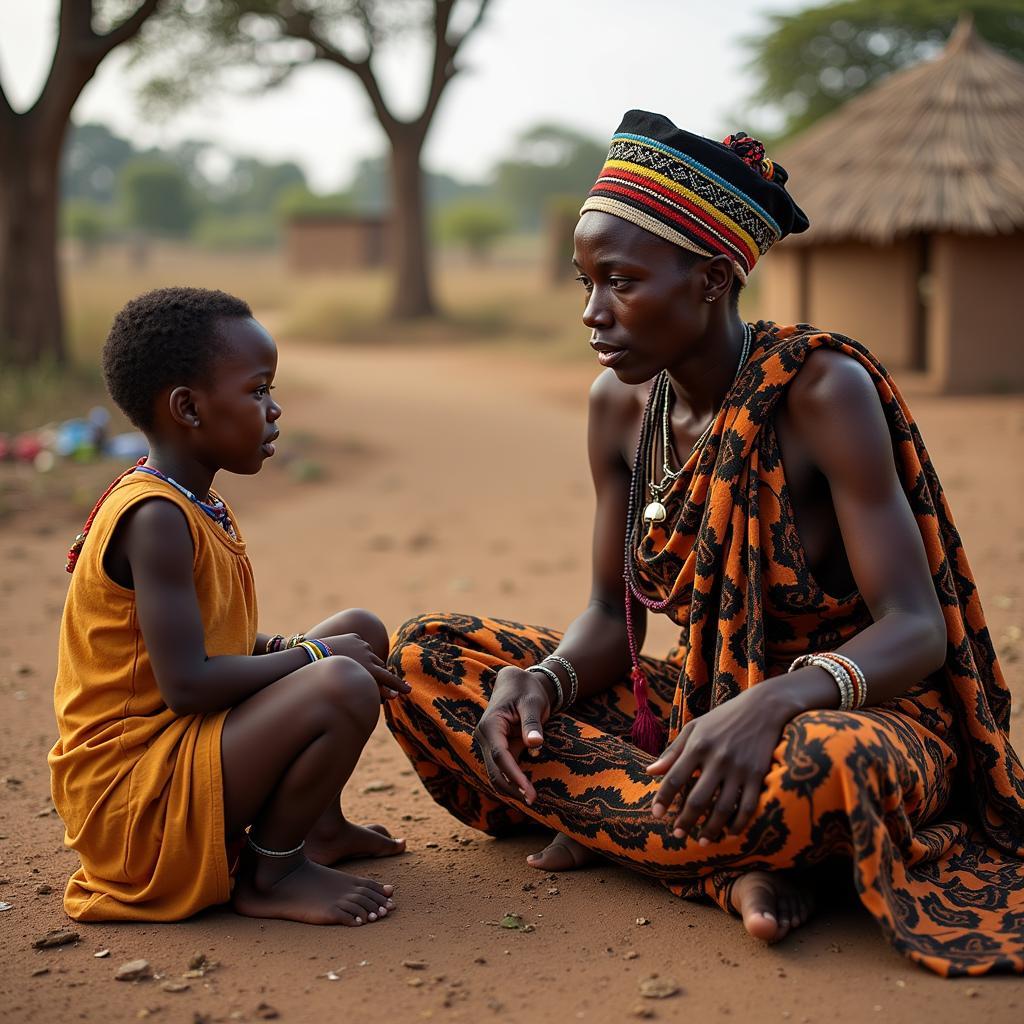Understanding the Factors Contributing to African Babies Deceased
The loss of a child is a devastating experience for any parent, regardless of geographical location. Sadly, the phrase “African babies deceased” reflects a harsh reality that demands attention. While infant and child mortality rates have declined globally, the rates in many African countries remain disproportionately high. Understanding this complex issue requires a multifaceted approach, delving into the interplay of socioeconomic factors, healthcare access, and cultural practices.
Unveiling the Socioeconomic Realities
Poverty casts a long shadow over many African nations, significantly impacting child survival rates. Families struggling to meet basic needs often lack access to adequate nutrition, safe water, and sanitation, increasing a child’s vulnerability to life-threatening diseases.
 Family struggling with poverty
Family struggling with poverty
Furthermore, limited access to education, particularly for women, perpetuates a cycle of poverty and limits knowledge about essential childcare practices.
Navigating the Healthcare Landscape
The state of healthcare infrastructure in many parts of Africa plays a critical role in infant and child mortality rates. Limited access to quality healthcare facilities, a shortage of trained healthcare professionals, and inadequate medical supplies all contribute to preventable deaths.
 Rural healthcare challenges
Rural healthcare challenges
Geographic isolation further exacerbates these challenges, particularly for communities in remote or underserved areas.
Examining Cultural Practices and Beliefs
While often deeply rooted and well-intentioned, certain traditional practices can inadvertently contribute to child mortality. For instance, a delay in seeking timely medical attention due to a reliance on traditional healers can have severe consequences for a sick child.
 Seeking help from traditional healers
Seeking help from traditional healers
Furthermore, cultural beliefs surrounding breastfeeding and complementary feeding practices can impact a child’s nutritional intake and overall health.
Addressing the Multifaceted Challenge
Effectively reducing infant and child mortality rates in Africa necessitates a multi-pronged approach that addresses the underlying socioeconomic disparities, strengthens healthcare systems, and promotes culturally sensitive healthcare interventions.
Investing in poverty reduction programs, empowering women through education and economic opportunities, and improving access to clean water, sanitation, and nutritious food are crucial steps. Strengthening healthcare infrastructure by building and equipping hospitals and clinics, training healthcare professionals, and ensuring the availability of essential medicines is paramount.
Furthermore, integrating traditional healthcare practices with modern medicine can create a more holistic and culturally acceptable approach to healthcare delivery. Community engagement and education programs are essential to raise awareness about the importance of seeking timely medical attention, promoting optimal breastfeeding and complementary feeding practices, and dispelling potentially harmful cultural beliefs.
Addressing this complex issue requires a collective effort from governments, healthcare organizations, communities, and individuals to create a future where every African child has the opportunity to thrive.



